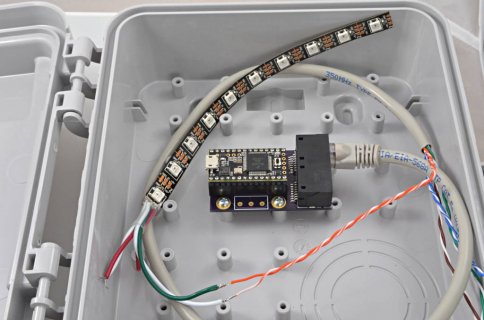RichardFerraro
Well-known member
RECOMMENTATIONS:
I see that you are now recommending 5v thereby requiring the HCT245.
I note that Adafruit is warning that a 300 ohm resister should be used before the first led.
I also note that careful layout and power application is essential.
MY SYSTEM:
I am using sticks from Arduino mega with strips from Adafruit and two 144 led/meter strips for ledLightingHut.com.
(On arrival one worked and one did not.) These include a 300 ohm series resister at the input pad to the strip.
MY PORT:
I will be using the Teensy 3.1 when the HCT245's arrive.
QUESTION:
Do you recommend
a) reducing the value from 300 ohm to tune for best signal characteristics?
b) moving the resister to the output of the HCT245's?
thank you,
Richard
I see that you are now recommending 5v thereby requiring the HCT245.
I note that Adafruit is warning that a 300 ohm resister should be used before the first led.
I also note that careful layout and power application is essential.
MY SYSTEM:
I am using sticks from Arduino mega with strips from Adafruit and two 144 led/meter strips for ledLightingHut.com.
(On arrival one worked and one did not.) These include a 300 ohm series resister at the input pad to the strip.
MY PORT:
I will be using the Teensy 3.1 when the HCT245's arrive.
QUESTION:
Do you recommend
a) reducing the value from 300 ohm to tune for best signal characteristics?
b) moving the resister to the output of the HCT245's?
thank you,
Richard


